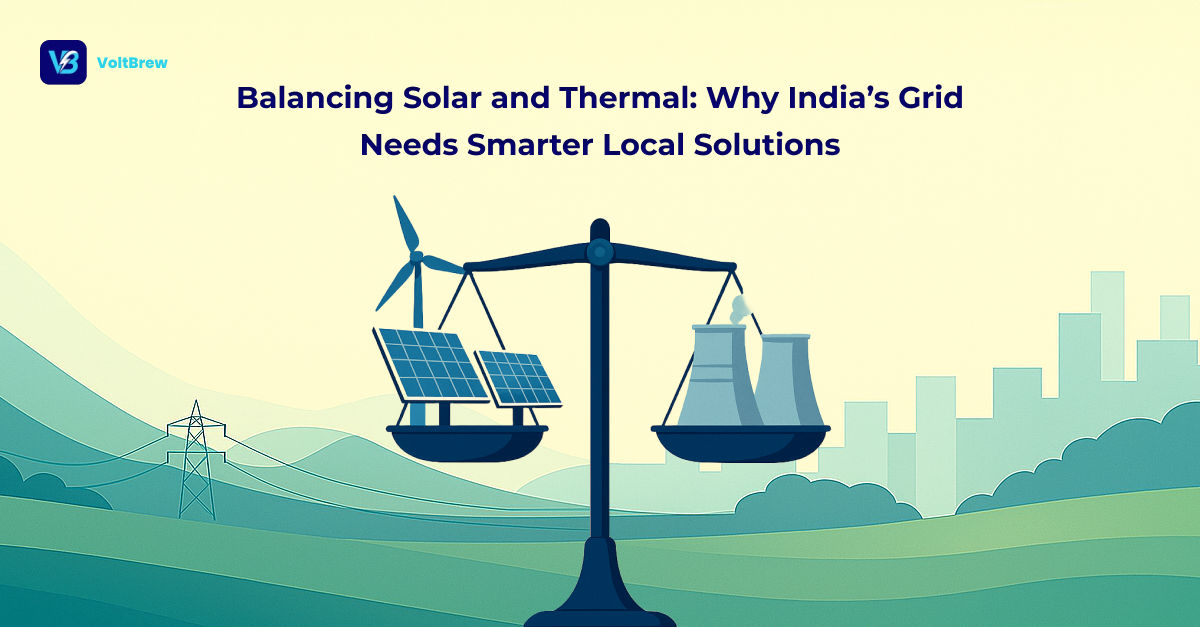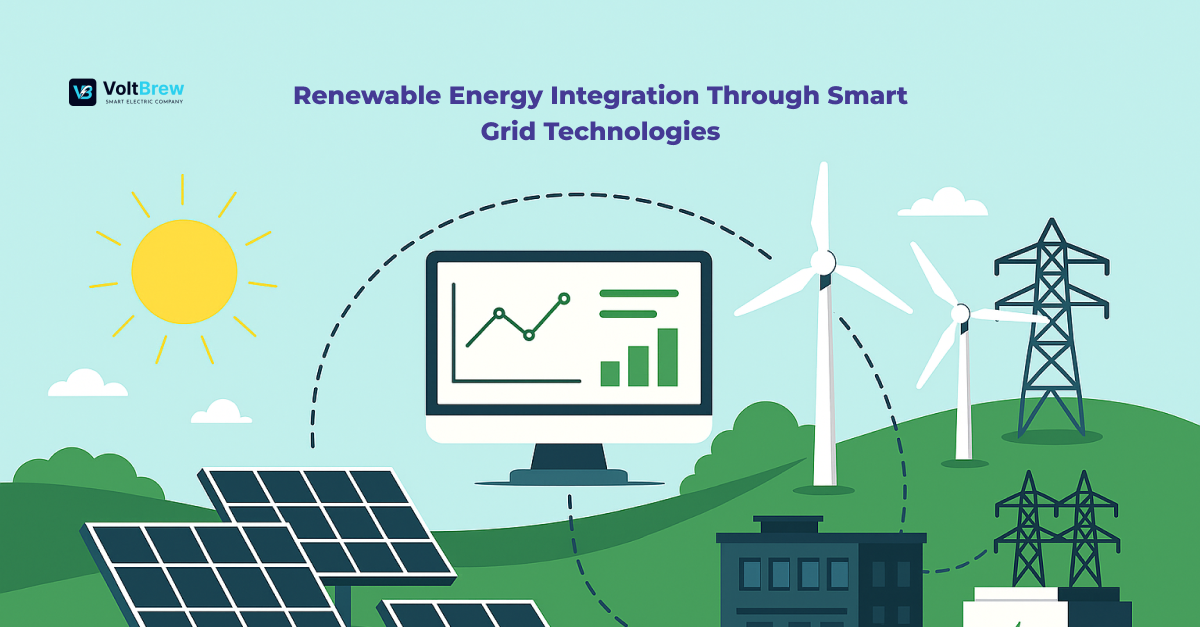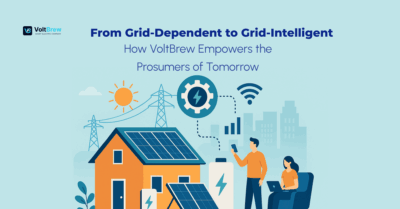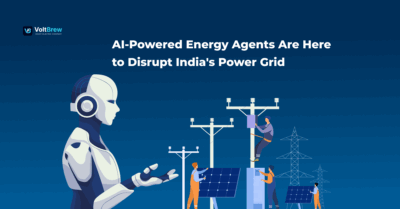India’s power mix is transforming. India’s power generation capacity has expanded significantly over the past decade, rising from 305 GW in 2015–16 to approximately 476 GW by mid-2025—an impressive 56% growth driven largely by renewable energy sources. Growth has been led by renewables – solar PV capacity skyrocketed from just 2.82 GW in 2014 to 110.9 GW in 2025. Wind and nuclear add another ~60 GW; together India’s non-fossil fuel capacity (227 GW) is now nearly half the total. This has all but eliminated power shortages (peak shortfalls fell from 4.2% in 2013–14 to 0.1% in 2024–25).
However, integrating fast-growing solar energy (with its midday peaks and overnight drop-offs) is creating new challenges for grid reliability, DER integration, and balancing. Key issues include managing the “duck curve” ramp (deep net-demand dips at noon followed by steep evening ramps), keeping frequency stable as grid inertia falls, and minimizing curtailment when supply outstrips demand. At the same time, coal-fired generation remains critical: coal plants still supply roughly 75–76% of India’s electricity and will likely continue providing ~60% of non-solar-hour generation even under aggressive renewable energy targets. This paradox – needing both rapidly variable solar and dependable thermal – demands more flexible grid solutions at the local distribution level.
India’s Solar Surge – Capacity Growth and Demand Patterns
India’s solar build-out has been extraordinary. Over the past eleven years, solar capacity has grown almost 39 times, from ~2.82 GW in March 2014 to 110.9 GW by mid-2025. In FY 2024-25 alone, a record 23.83 GW of solar PV was added. Renewables (solar, wind, small hydro, biomass) now amount to 226.9 GW – 49% of total capacity – up from just 17.2% in 2014. India even ranks 3rd globally in installed solar capacity.
Year-on-year growth: Solar has grown ~36–40% annually in recent years. Solar energy’s share in India’s total electricity generation saw a steady rise—from around 5% in FY2022 to 6.3% in FY2023—reflecting the sector’s growing role in the national energy mix. Total electricity output rose from 1,168 BU in 2015–16 to ~1,824 BU in 2024–25 as demand climbed ~5–9% annually.
State Leadership in DER Deployment
Five states – Rajasthan, Gujarat, Karnataka, Tamil Nadu and Maharashtra – now account for 70.8% of India’s solar capacity. Rajasthan leads all states in solar area and in generation. In FY2023-24, Rajasthan’s utility-scale solar farms generated 70.96 BU (billion units), the highest by far (20.9% of the nation’s solar generation). Other top generators include Karnataka, Gujarat and Tamil Nadu; together those five states produce >75% of India’s solar energy output.
Changing Demand Curves and the Duck Curve Phenomenon
Peak electricity demand in India is still rising, particularly driven by cooling/heating loads. Thanks to nighttime demand (industry, appliances) plus surplus capacity, the overall grid has plenty of spare energy. But solar’s timing mismatch—huge midday production vs. low demand—means India’s load curves increasingly reflect the ‘duck curve’ phenomenon. Grid operators and DISCOMs are grappling with sharp evening surges that strain the system. States like Karnataka and Tamil Nadu with high variable renewable energy (VRE) shares report growing ramping requirements during sunsets and overcast days.
Seasonal Variability and Grid Balancing
Solar output varies by time and weather. Monsoon or cloudy weeks can cut solar output significantly (POSOCO reports ~3–10% irradiance drops across the country). Seasonal rainfall also influences hydropower and thermal plant availability. While India had a 3.6% energy surplus overall in 2023–24, distribution-level constraints and seasonal dry spells still cause tight situations in some regions, highlighting the need for local energy storage and DER coordination.
Thermal Generation and the Need for Flexibility
Despite the RE boom, thermal power generation (mostly coal) still dominates. India had ~240 GW of coal and gas capacity as of mid-2025. Even in high renewable energy penetration scenarios, coal is projected to meet ~60% of demand during non-solar hours. However, coal plants are increasingly under stress: many now operate below design efficiency, and water constraints lead to forced outages.
- Curtailment: As solar and wind scale up, generation is increasingly curtailed to preserve grid stability. Rising RE capacity without adequate smart grid infrastructure could lead to higher curtailment rates. Energy storage systems and demand-side management are key to reducing these losses.
- Ramping needs: Conventional plants must ramp rapidly post-sunset. Forecasts suggest a 5–6x increase in ramping requirements by 2030. Without flexible DERs and real-time control, this will mean higher costs and wasted solar output.
- Variability and inertia: High solar shares reduce grid inertia, making frequency control harder. States with >50% VRE during some hours will need battery energy storage systems (BESS), fast reserves, and smart load response to stay stable.
- Demand patterns: Agricultural and industrial loads are shifting with time-of-day tariffs. But India needs a broader demand response strategy, including dynamic pricing, smart meters, and intelligent load control for cooling and appliances.
Improved grid reliability has eliminated major blackouts, but challenges persist. CEEW warns that meeting 2030 demand with 500 GW of non-fossil capacity will still require grid flexibility investments, including frequent-start coal plants, pumped hydro, and advanced demand response mechanisms.
Curtailment, Ramping, and Distributed Energy Challenges
Local Distribution Challenges in Key States
Each state presents unique DER integration challenges:
- Rajasthan: Solar leader with ~23 GW, strong midday surpluses, evening deficits. Curtailment and reverse flows are increasing, calling for local VPPs and battery storage.
- Gujarat: Strong wind/solar base, exports power to neighbors, but still faces transmission bottlenecks. Future readiness depends on smart substations and Green Energy Corridors.
- Karnataka: High VRE share (~29%), severe sunset ramps, early adopter of grid-connected battery pilots and inverter-based grid support.
- Tamil Nadu: Wind and solar-rich, seeing reverse flows on rural feeders. Now trialing real-time net metering and substation upgrades to better manage local variability.
- Maharashtra: Leading rooftop solar rollout, yet urban congestion and thermal shutdowns remain issues. Exploring smart inverter controls, on-demand curtailment, and DER visibility platforms.
Global Lessons: Germany, Australia, California
- Germany: 60% RE share. Transmission upgrades and redispatch mechanisms are central to reducing curtailment. Incentivizing storage and flexible demand-side assets has become critical.
- Australia: Rooftop solar dominance causes local voltage issues and curtailment. Solutions include bi-directional inverters, community batteries, and dynamic exports.
- California: The “duck curve” has driven rapid deployment of utility-scale batteries and distributed VPPs. A 2023 pilot aggregated 8,500 home batteries to discharge 27 MW during evening peaks—proof that DER coordination works.
Expert Insights on Grid Flexibility
- IEA: Warns India’s high-VRE states must prioritize flexibility tools—from AI-driven DER orchestration to frequency response services.
- CEEW: Finds India needs 5–6× more ramping capacity by 2030. Coal and hydro must become more flexible, and new policies should support behind-the-meter DERs and time-shifting solar with storage.
- POSOCO & MNRE: Advocate for more integrated energy planning, emphasizing solar-plus-storage tenders, VPP pilots, and frequency management systems.
VoltBrew’s Local Smart Solution
VoltBrew’s AI-driven energy platform addresses these issues by bringing local intelligence to the edge of the grid. Through smart controllers and real-time telemetry, it enables DERs—like rooftop solar, batteries, EVs—to participate actively in grid balancing and demand response.
VoltBrew’s Virtual Power Plant (VPP) architecture aggregates thousands of assets to provide peak shaving, frequency regulation, and dynamic load management. For example, batteries can be dispatched in the evening instead of ramping coal, and solar surplus can be absorbed mid-day. The system leverages weather forecasts, price signals, and grid conditions to automate energy decisions.
Pilot projects in Puducherry and California demonstrate the promise of this model. In Puducherry, VoltBrew-style aggregation helped reduce diesel reliance. In California, a similar approach delivered 27 MW of peak capacity—validating that decentralized flexibility can be scaled effectively.
Conclusion
India’s power sector stands at an inflection point. The massive solar deployment of the last decade is a success story—but full benefits will only be realized with smart distribution system modernization, DER coordination, and flexibility-enhancing technologies.
VoltBrew’s vision aligns perfectly with this future: AI-enabled, local control of distributed energy. By transforming static devices into active grid participants and orchestrating them as Virtual Power Plants, VoltBrew is building the digital layer India needs to bridge solar and thermal.
The path to a resilient, affordable, and sustainable grid lies in combining large-scale generation planning with intelligent, decentralized management. India’s energy transition depends on it.





